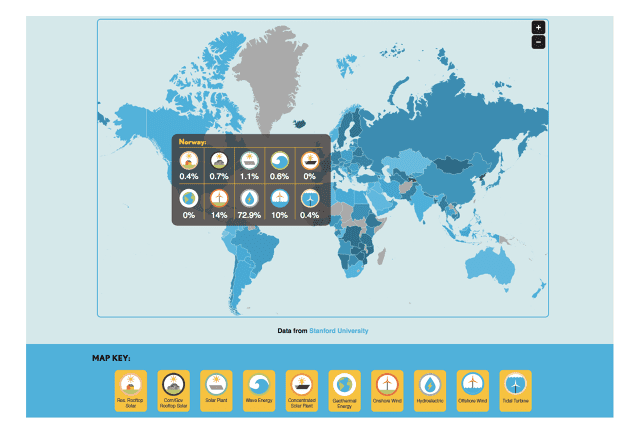A new study from Stanford University found that the world could realistically go 100% renewable in a few decades, using only wind, water, and sunlight (WWS).

Right now, we’re still a long way to go. Less than 5% of the planet’s energy demands are satisfied with renewables, but things are improving fast.
“As of the end of 2014, 3.6% of the WWS energy generation capacity needed for a 100% world has already been installed in these countries, with Norway (58%), Paraguay (54%), and Iceland (46%) the furthest along,” the study reads. “The roadmaps envision 80% conversion by 2030 and 100% conversion of all countries by 2050.”
A climate deal was signed at Paris, but now the real work begins. Is a renewable energy future really feasible, and if yes – how could we reach it? This is where this study steps in.
“These are basically plans showing it’s technically and economically feasible to change the energy infrastructure of all of these different countries,” says Mark Z. Jacobson, director of the Atmosphere/Energy Program at Stanford University, who worked with University of California colleagues to analyze energy roadmaps for 139 countries.
Basically, the study made estimates for the 2050 energy consumption of these 139 countries for agriculture, transportation, electricity, heating, cooking and forestry. They then moved on and calculated how these energy requirements could be fulfilled, showing that such a future is indeed not only possible – but within grasp.
“People who are trying to prevent this change would argue that it’s too expensive, or there’s just not enough power, or they try to say that it’s unreliable, that it will take too much land area or resources,” Jacobson said in an interview to the website Co.Exist

With 100% WWS, heating and ground transportation has to be completely electric, relying on electric and hydrogen vehicles, but that’s just the beginning. We’ll need to redesign much of our infrastructure, but according to the analysis, it would be profitable to do so. Renewable energy is getting cheaper and cheaper, and when you factor in the negative externalities of fossil fuels, the difference becomes even more striking. The transition could lead to $5 trillion savings from an environment, climate damage and fuel cost.
Interestingly, Stanford released a similar report on how the US could go fully renewable by 2050 – a state-by-state analysis. The future can be green, and should be green.






